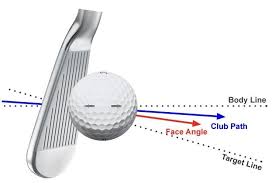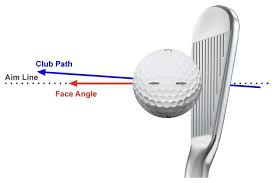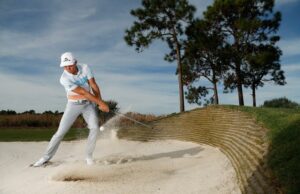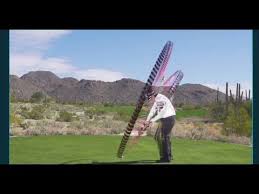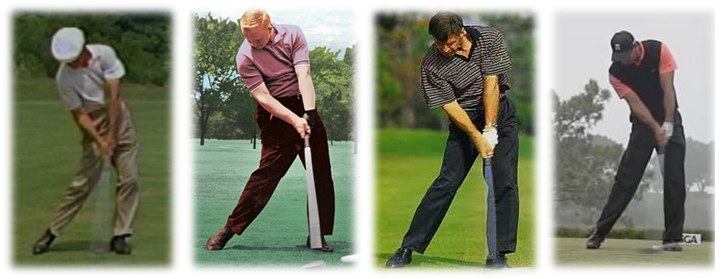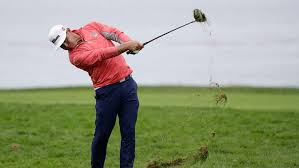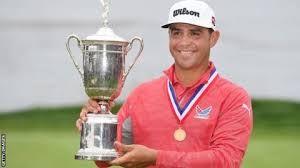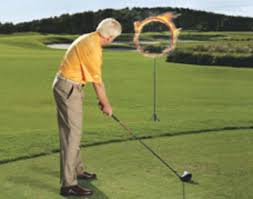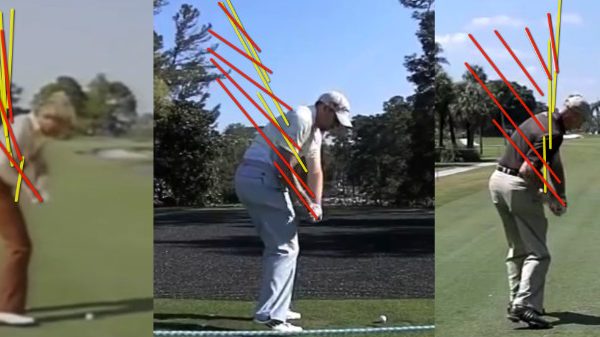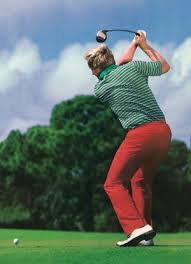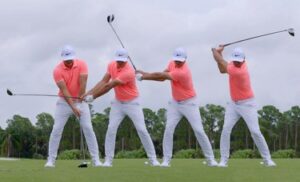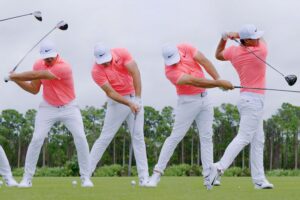The more comfortable we are about our game the easier it is to put too much power into our next shot. Somehow we need a reminder to back-off and overcome the effects of an adrenaline rush. The next drive after a birdie hole is normally a “PBSU” (Post Birdie S—-Up). An adrenaline rush may be causing the worst shots in YOUR game too. Rory McIlroy found this out when he stepped up to the first tee at the Open in Royal Portrush. He was an 8 to 1 favorite to win the OPEN. CHOKE!
After Rory took an 8 on the first hole his odds of winning dropped to 33 to 1. His first shot smashed a women’s phone in her pocket as it careened out of bounds. His second tee-off attempt was lost in bushes short of the green. He finally chipped on and 2 putted for an 8 on the par 4. He did make a few birdies on his first round but on the 16th he 3 putted from 4 feet [including a stupid 12 inch putt missed in anger] and on the 18th he finished with a triple bogey for an 8 over par.
Tiger Woods had the same confidence as Rory and shot 7 over par on the same day. There has to be a lesson for all of us in this crisis for Rory and Tiger. Their failure on the first day of The Open prove to all of us that skill is important but if your mind is not in the right place, golf is an impossible game to play well.
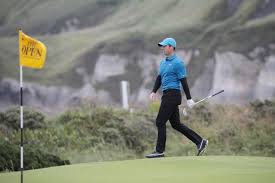
Rory McIlroy carded a quadruple-bogey 8 to start the Open. Just started with a little adrenaline rush to compensate for a fade during his warm-up round.
Rory said that he went out of bounds to the right during his practice round on the previous day. His mind was on not making the same mistake. His mind should have been on a nice draw that he knew that he has hit hundreds of times before.
Turn your Brain on to these points for every shot in your game.
1/ Calm Down: Take a deep breath and exhale to relax your body during your setup. Don’t let adrenaline spoil your next shot. Focus on your calm and relaxed mind to hit the shot that you know you can hit. BTW Rory stabbed at a 12 inch putt in anger and missed it- – – That stupid single mistake cause him to miss the cut. J.B. Holmes was tied for the Open lead starting day 3 and shot +16 on day 4. Possibly there was a little P&V in his veins.
2/ Take More Club and Grip Down to Swing at 80%: Reach your target with a layup that you know you can make.
3/ Make a Practice Swing to FEEL Your Next Shot: Feel your backswing with lag as you bump forward to start your downswing. For your DRIVES: Power up your target line. For your IRONS: Transfer your weight forward to ensure that you impact your ball before you take any turf or skim the grass.
4/ Focus on your Balanced Finish: Let the weight of your club do the work as you finish balanced on your leading foot.
Golf is a game of mental stability. Limit your thoughts to positive thoughts on the swing that you are making. Practice with GOLFSTR+ to build your swing for every club in your bag. Buy one today at www.golfstr.com


